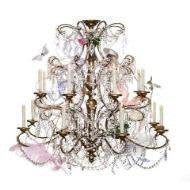Of all the plays in the Shakespearean canon, The Taming of the Shrew is perhaps the most problematic for a modern audience, depicting as it does a husband breaking the spirit of his wife using methods which would be all too familiar to prisoners at Abu Ghrirab and Guantanamo Bay, namely sleep deprivation, starvation and violence. The Merchant of Venice poses similar difficulties because of its virulently anti-Semitic content, but whereas in the Merchant Shakespeare seems prepared to challenge stereotyped attitudes towards Jews, he appears more equivocal in his attitude towards women here, as Ann Thompson, editor of the New Cambridge edition of the play points out.
Indeed such is the profound distaste that the Shrew can arouse that, in 1978, the critic of one national newspaper suggested that further productions of the play should be shelved. The history of stagings in recent years, Thompson writes, has been a search for ways of softening the content, either through excision, a highlighting of the themes of acting, dreaming and games-playing which are woven into the play, or by treating it as broad comedy. This, for example, was the approach adopted at The Globe by a recent production in which the character of Petruchio was played by an actress, a move which enabled the director to transform the play into a deflation of male machismo.
The approach is not without heavyweight intellectual support. W H Auden certainly classed Shrew as a farce and judged it a failure accordingly, since Shakespeare, he thought, didnt do farce. To his credit, Edward Hall, in his production for the all-male Propeller company, while acknowledging the dream and game-playing aspects of the play, bookends the main action with an induction scene often cut and a closing scene from a bad quarto of the play, creating a play within a play and confronts the difficulties posed by the Shrew in these times head on and sets out to lay bare the inherent cruelty and violence with which Katherine is 'tamed'.
In the opening scene, Sly the Tinker stumbles on, three sheets to the wind, and promptly falls asleep. A lord and his huntsmen happen on him and decide to make him the butt of a practical joke by convincing him that he is of noble birth. To this end, Sly is taken to the lords house, dressed in his clothes and is persuaded that, contrary to what he believes, he is lord of the house, but has been in a sort of coma for the past fifteen years. Hall reconfigures this to show Sly drunkenly jilting his bride-to-be at the altar before falling asleep. After the induction scene he is then persuaded to take part in the play proper and assume the role of Pertruchio the wooer.
Thompson, writing three years ago, speculated about what light an all-male production of the Shrew might cast on the play. Im not sure that it does reveal an awful lot and in fact it probably mitigates the deep disquiet we would feel if an actress was subjected to the sort of aggression meted out here. Unusually for Hall, the production also feels ultimately uneven, caught between broad comedy and more serious exegesis.
The road to Kates Damascus begins with a wedding ceremony which is staged by Hall and his ensemble with enormous vim. Dugald Bruce Lockhart, looking like a cross between James Caan and Woody Harrelson, staggers on wearing little more than a pair of briefs, makeup and a cowboy hat - into which he urinates. Dugdale is excellent and is the lightning rod for the comic energy which courses through the scenes leading up to Kates public capitulation - servants flee in terror, or dive under furniture as he warms to his task with a fury which baffles and finally utterly overwhelms Kate, every inch a termagant - a fine performance by Propeller veteran, Simon Scardifield. There is good supporting work, particularly by Jason Baughan as Grumio, servant to Pertruchio, and as a pedant, and a crowd-pleasing performance by Tony Bell as Tranio.
The set, by veteran company designer Michael Pavelka, is typically inventive, and entirely of a piece with the dream-like qualities of the play. Characters emerge from and disappear into a number of mirror-fronted wardrobes. Typically too, the action is augmented by a wonderful and wonderfully eclectic range of music performed by the cast theselves, ranging from a cappella singing and church organ music to the blues. The costumes though are a baffling mismatch, mixing elements from matador, Maigret, Tom Waits down at heel cool, and 80s era George Michael, as though plucked at random from a costume hamperl.
The key question at the end of the evening is, has Katherine been tamed and with what result? Some Kates have submitted with singular ill-grace; others have delivered the famous homily with a wink. Here, Hall shows Kate utterly broken and the prospect for mutual happiness seems non-existent. Ultimately, the production does not resolve anxieties about the play in the way that Doran brilliantly achieved at the RSC three years ago and is, in the end, a mixture of contradictory elements: very dream-like.
Plays at the Watermill until 28th October before touring
Philip Fisher reviewed this production at the Old Vic
